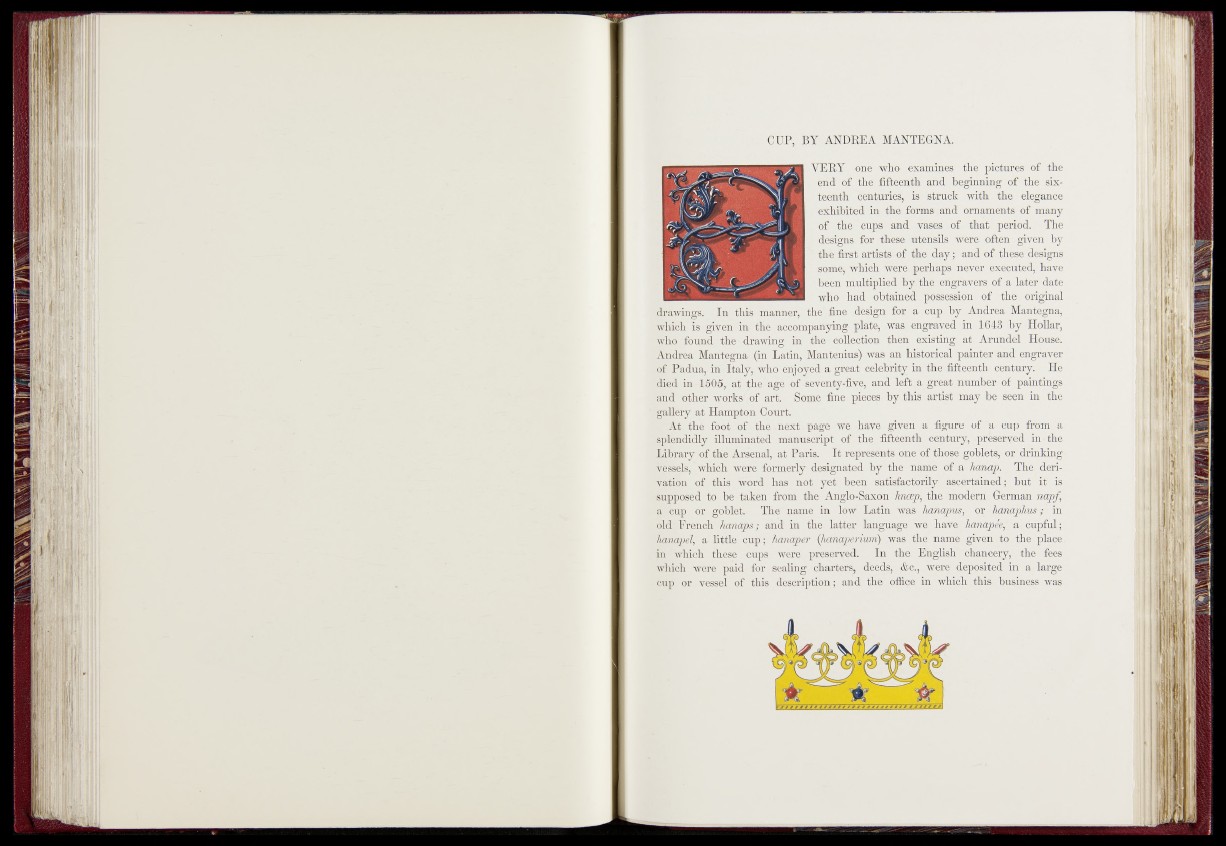
■ P , BY ANDREA -^FANTEGNA.
VERYJ'otie who examines the pictures of the
P>eml¥qf the'fifteenth and'beginning of the six-
fenturiiY, i& »truck with the elegance
R&e^hibilcd in '{’forms and ornaments of many
^^^^^^gu-gs'filjn'd^y^e’s/of that period. The
F dt’»ign» iuPjmUc utensil» were, often .given by
^ the »first artists Ofij&ejS y ; and'of^Mse designs
Bp |^ ({Smrnjtihfcw ere - perhaps1 h&Tr executed. hate
gpffccn Tnidt-mlie^^Sthe-tmgraxer’-'.of a later date
|> vTioVhad obtaincd^p<^K»sit>n of ^he* original
IStwings’. "Spins' innnner,^ p~. fine ^de^ B for aWu^MgAiidn i Mantegna. •
wht e h ^ i s i n : t h e accompanyingplate, was engraved in 1643 by*Hollar,
uhd touiid the Idi-awing in tl^!p]|eg^A-.theti. .Gxistiu^^^Arundel House.
Andrea Mantegna (in Latin,^mtmins}* w a^am’hNtorh h Wpainter ‘and’engraver
m iPadua, t n i t i i m ((1 a iruat <elcbrity iSftKe fifteentMteehtury:'~'■ He
died hse> ^ ltft J sr*n<1+ i»™bew&paintings
of a.vry ^ ^ ^ Gn^ineces bywbs’artist 'm ^ be^ ^Min § ||f
^ lfe rj’ tit ^Hampton Court. > A
®(At Tthe g j ^ ^ of .ithe nc xt page we have given a, ^fijghre^o£^a'5ciip from a
^ ^ i didl^ jllmninated m a p ^& ip t® the. fifteen .pri seryed* in ‘the
M jrarv of the Arsenal, at Paris. It represents one of those goblet»,f or<dfin h 1 ngj
ESptvMs- which were former! y^lcsignatetl~ by ^the’- nam ej|ar ».‘hunap ^ The _dm-
Ejafion^of. this Sp^S1! has not yet been satisfaetoriTOaMi mamed’rebut it is
Hflnoscd jqtbe taken from rife Anglq-SaxonyA??<'p-/';, tin* mod^ y f u '-rmatij mf>/,
or gdblqU\ The name in !•» » I irin was hdn^ ^ ^ ^ S m m S n hus: in
Freh oft -ihanaps; and in flare* latter •’■language v ■ / ijv 5^ ./’V: w-lfc' npful;
minapel, a htthijfcup; hamper (katiaperifrrh) ,rwa» the name’,givnjgmg the place
in which these .'rciins. were preserved.'
<w;h®h were,paid for,sealing! charters, d^ed^SJa,/ xvcrc^denosrted iri a*l|||gg|
cu$ or vessel of^his description ifelfid in^^joh thi» »bfi'ijiess ’was